Benjamin Franklin was more than one of America’s most beloved Founding Fathers. He was also the first major American inventor. In 1748 at the age of 42, Franklin retired from his career as a printer to turn his attention full time to studying biology and physics, pursuing his curiosities about the world.
Here are just six inventions we can attribute to one of America’s most beloved founding fathers:

1. The Lightning Rod
Franklin is most famous for his experiments with electricity. Franklin was not the discoverer of electricity but rather he spent time learning about its properties. He was aware of the dangers of electricity and lighting. He used the concept of electric ground to investigate electricity and lighting. This concept led to the invention of the lighting rod. A metal rod was attached to the high point of a building. A metal cable attached to this rod ran down the side of the building and into the ground. When lighting struck the rod, the electricity ran down the cable and into the ground, preventing damage to the building.
2. Bifocals
Franklin was curious about life. This curiosity along with the physical needs of himself and his family led to some of his other inventions. By the age of 40, Franklin needed to wear two different pair of glasses. He had a pair for reading and a pair for nearsightedness. Always switching between the pairs was a hassle. To save himself the trouble, Franklin cut the lens of both glasses in half horizontally. He attached the top of his nearsighted glasses to the bottom of his reading glasses. These were the first pair of bifocal glasses. Continue reading “Famous Inventors: Benjamin Franklin”

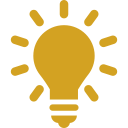
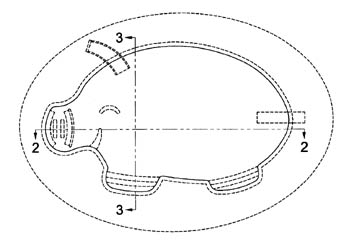
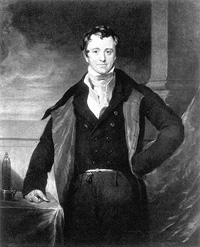 Nitrous Oxide as an Anesthetic
Nitrous Oxide as an Anesthetic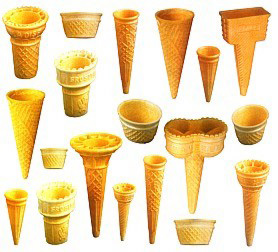 There are many stories of who invented the ice cream cone. Many people say that the ice cream cone was invented July 23, 1904 at the St. Louis World Fair. But who at the fair invented the cone? There were more than fifty ice cream vendors and over a dozen waffle stands with many claims of invention.
There are many stories of who invented the ice cream cone. Many people say that the ice cream cone was invented July 23, 1904 at the St. Louis World Fair. But who at the fair invented the cone? There were more than fifty ice cream vendors and over a dozen waffle stands with many claims of invention.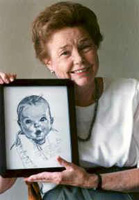 In 1928, the Fremont Canning Company was looking for a face to represent its new baby food campaign. Owner Frank Gerber decided to sponsor a nationwide competition to find the face that would appear on the new packaging. Paintings and drawings were submitted from all over the country. The entries included everything from intricate oil paintings to simple sketches.
In 1928, the Fremont Canning Company was looking for a face to represent its new baby food campaign. Owner Frank Gerber decided to sponsor a nationwide competition to find the face that would appear on the new packaging. Paintings and drawings were submitted from all over the country. The entries included everything from intricate oil paintings to simple sketches.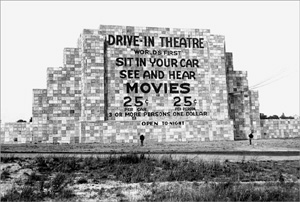 Richard H. Hollingshead, Jr. is credited with the invention of the Drive-in Movie Theatre. Hollingshead’s position as the sales manager for Whiz Auto Products Company was not very interesting and he set out to challenge himself. While studying American culture, Richard discovered that while Americans would never give up going to the movies it was often a hassle for parents. Going to the movies was not a family activity. Children went to matinees while adults dressed up and went to evening shows. A babysitter was needed for the children and dad had to dress up after a day of work.
Richard H. Hollingshead, Jr. is credited with the invention of the Drive-in Movie Theatre. Hollingshead’s position as the sales manager for Whiz Auto Products Company was not very interesting and he set out to challenge himself. While studying American culture, Richard discovered that while Americans would never give up going to the movies it was often a hassle for parents. Going to the movies was not a family activity. Children went to matinees while adults dressed up and went to evening shows. A babysitter was needed for the children and dad had to dress up after a day of work. 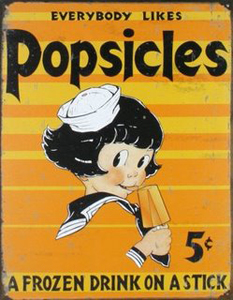 In 1905, an eleven-year old boy mixed some soda water powder and water. The boy, Frank Epperson, forgot the mixture on the back porch with the stirring stick still in the container. Overnight the temperature dropped below freezing turning the mixture to ice. Epperson took the frozen soda water to school to show his friends.
In 1905, an eleven-year old boy mixed some soda water powder and water. The boy, Frank Epperson, forgot the mixture on the back porch with the stirring stick still in the container. Overnight the temperature dropped below freezing turning the mixture to ice. Epperson took the frozen soda water to school to show his friends. In 1971, Carolyn Davidson was studying graphic design at Portland State University. Phil Knight, the co-founder of Nike, was teaching accounting classes at the school while starting his business then known as Blue Ribbon Sports. Davidson began doing freelance work for Knight’s small company.
In 1971, Carolyn Davidson was studying graphic design at Portland State University. Phil Knight, the co-founder of Nike, was teaching accounting classes at the school while starting his business then known as Blue Ribbon Sports. Davidson began doing freelance work for Knight’s small company. Margaret Knight is credited with over 90 different inventions and she received 26 patents in her lifetime. Her patents included textile and shoe-making machinery, domestic devices, and an automobile engine. She received her first patent at the age of 30 but was inventing her entire life.
Margaret Knight is credited with over 90 different inventions and she received 26 patents in her lifetime. Her patents included textile and shoe-making machinery, domestic devices, and an automobile engine. She received her first patent at the age of 30 but was inventing her entire life. Shoe-fitting fluoroscopes were common items found in US, Canadian and British shoes stores from the 1920’s until about 1960. A shoe fitting fluoroscope allowed for a real time x-ray of a person’s foot inside a pair of shoes. A customer would stick his/her feet in the opening of the fluoroscope while standing and look through a viewfinder. The bones of the feet and the outline of the shoes were visible with the x-ray. Real time viewing allowed the customer to wiggle his/her toes and see how much room was inside the new shoes.
Shoe-fitting fluoroscopes were common items found in US, Canadian and British shoes stores from the 1920’s until about 1960. A shoe fitting fluoroscope allowed for a real time x-ray of a person’s foot inside a pair of shoes. A customer would stick his/her feet in the opening of the fluoroscope while standing and look through a viewfinder. The bones of the feet and the outline of the shoes were visible with the x-ray. Real time viewing allowed the customer to wiggle his/her toes and see how much room was inside the new shoes.